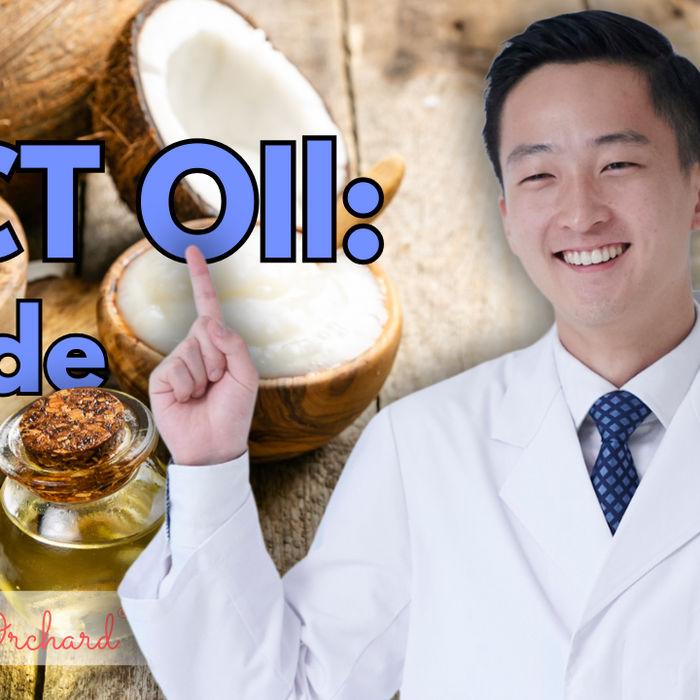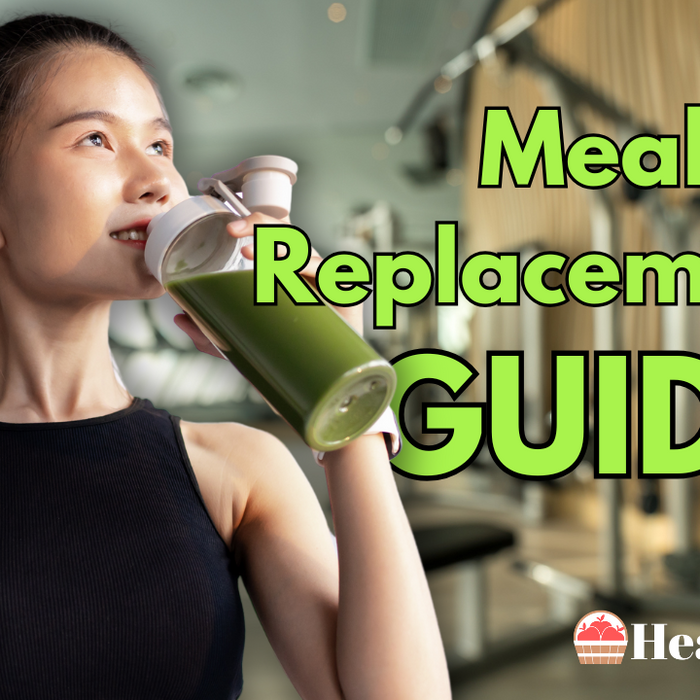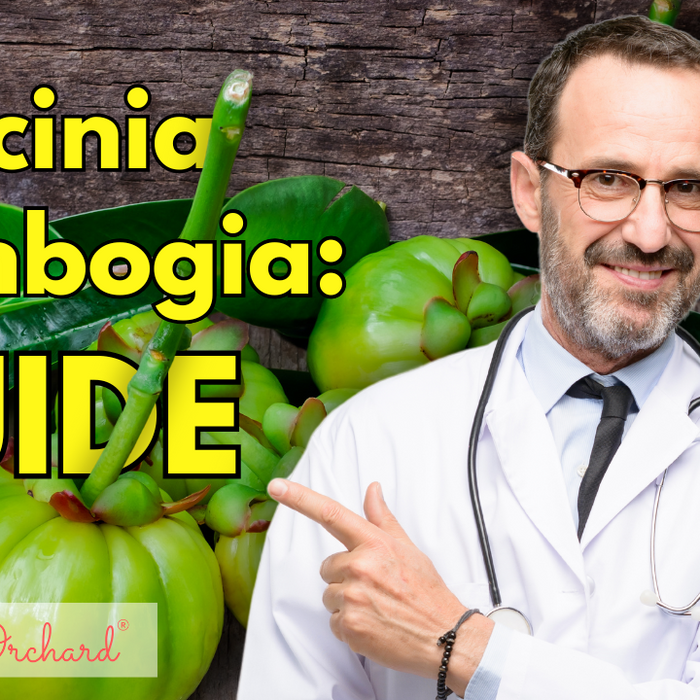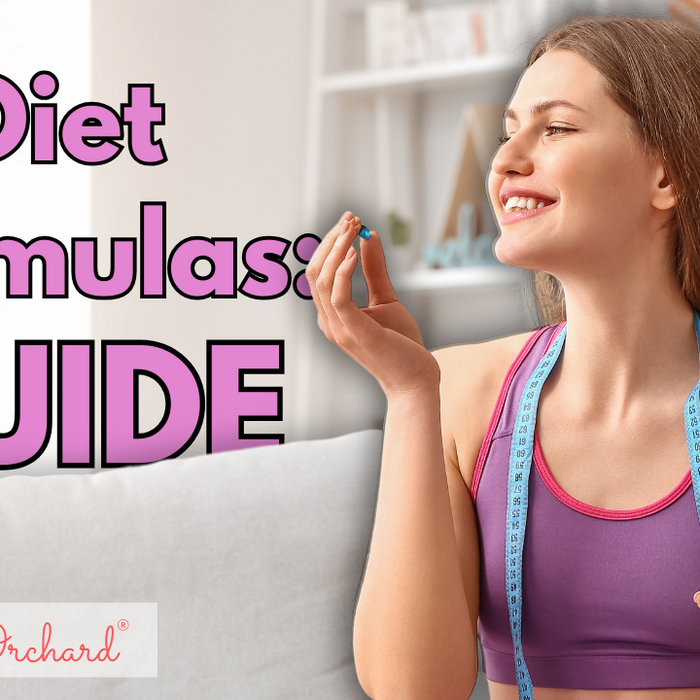
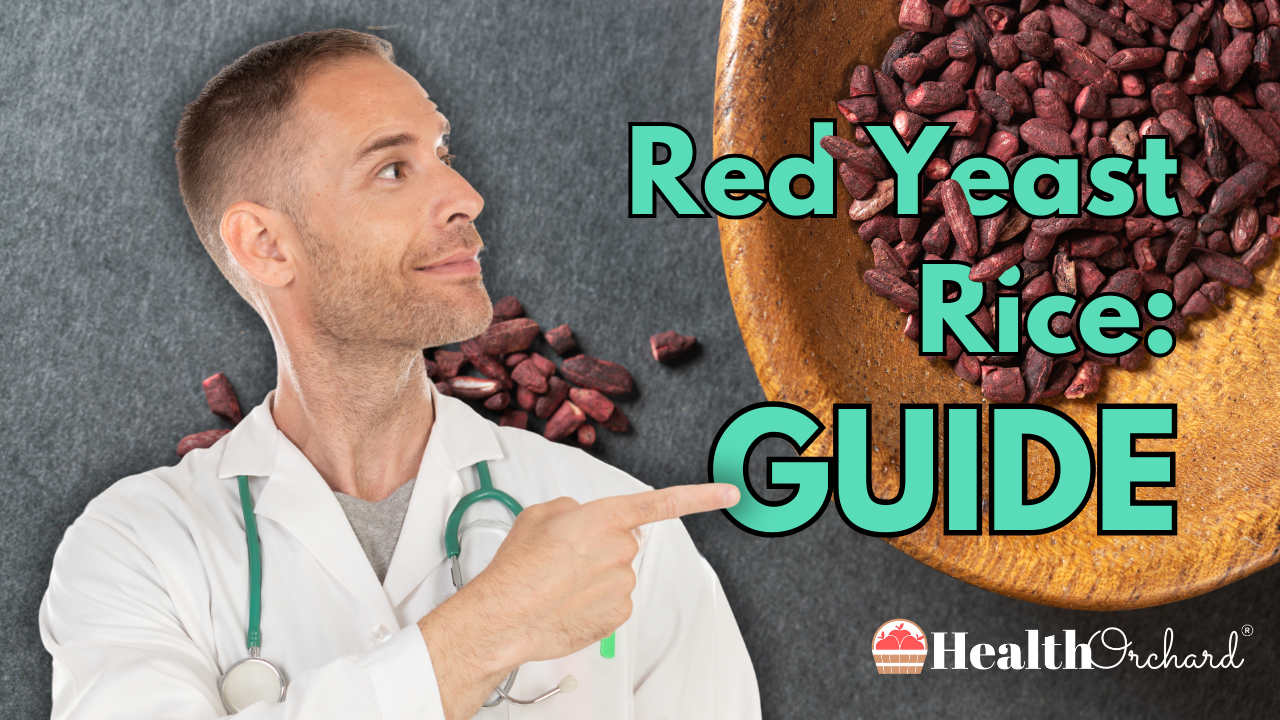
Red Yeast Rice: Guide
Key Takeaways
- Traditional Medicine Meets Modern Science: Red yeast rice contains monacolin K, a natural compound that mimics prescription statins.
- Heart Health Benefits: The supplement reduces cholesterol levels while providing antioxidant protection for blood vessels.
- Multiple Applications: Red yeast rice serves as both a dietary supplement and natural food coloring in modern uses.
- Safety Risks: Despite being natural, it can cause muscle pain and liver damage similar to prescription statins.
- Quality Requirements: Effective supplements require third-party testing and clear labeling of monacolin K content.
Red yeast rice has been used for centuries in traditional Chinese medicine and cuisine. This natural product is gaining popularity in modern health circles for its ability to support heart health, particularly in managing cholesterol levels. Did you know that red yeast rice contains monacolin K, a compound nearly identical to the active ingredient in prescription statins? This unique characteristic has made it a focal point of many studies on natural ways to manage cholesterol.
At Health Orchard, we aim to provide reliable information about supplements like red yeast rice to help you make informed health choices. Understanding its benefits and potential risks is key to using this supplement effectively and safely.
What is Red Yeast Rice?
Red yeast rice is a natural product created through the fermentation of white rice using the yeast Monascus purpureus. During the fermentation process, the rice develops a vibrant red hue and produces bioactive compounds, including monacolin K, pigments, and sterols, which are linked to its medicinal and nutritional properties. The unique blend of these compounds makes red yeast rice not only a popular ingredient in traditional diets but also a recognized supplement in modern health practices. Its monacolin K content, in particular, has drawn attention due to its ability to influence cholesterol metabolism, mimicking the action of some prescription medications.
In East Asian cultures, red yeast rice has been valued for centuries both as a food staple and a health remedy. Historically, it was used to improve digestion, stimulate blood circulation, and treat minor ailments. Beyond its therapeutic use, it serves as a natural food colouring and flavour enhancer, especially in fermented products like red rice wine and certain soy-based dishes. Today, red yeast rice has gained a global presence, offered in capsule, powder, and extract forms, making it an accessible choice for those seeking natural supplements for heart health and other wellness goals.

Health Benefits of Red Yeast Rice
Supports Cholesterol Levels
One of the most studied benefits of red yeast rice is its capacity to support healthy cholesterol levels. The presence of monacolin K in red yeast rice mirrors the active ingredient found in statins, prescription drugs used to lower LDL cholesterol, commonly known as "bad cholesterol." This natural compound works by inhibiting an enzyme called HMG-CoA reductase, which is critical in cholesterol production within the liver. Clinical studies have shown that red yeast rice can effectively reduce LDL cholesterol levels, sometimes as effectively as low doses of prescription statins. For individuals seeking natural ways to address hyperlipidemia, red yeast rice offers a compelling alternative, especially when combined with a balanced diet and lifestyle changes.
While its cholesterol-lowering effects are well-documented, it’s important to approach red yeast rice with caution, as the potency of monacolin K can vary significantly between products. This variability underscores the need for choosing high-quality supplements and consulting a healthcare provider before use, especially for individuals already taking cholesterol-lowering medications or managing chronic health conditions.
Antioxidant Properties
Red yeast rice also contains compounds that exhibit antioxidant properties, which may contribute to its cardiovascular benefits. Antioxidants help neutralize free radicals in the body, reducing oxidative stress that can damage cells and tissues. This reduction in oxidative damage is particularly beneficial for heart health, as it helps to maintain the integrity of blood vessels and reduce the risk of atherosclerosis, a condition characterized by plaque buildup in the arteries.
The antioxidant effects of red yeast rice extend beyond cardiovascular health. By protecting cells from free radical damage, it may support overall health and slow age-related decline. Although research into these broader antioxidant effects is still emerging, the combination of its cholesterol-lowering and antioxidant benefits positions red yeast rice as a valuable natural supplement for maintaining long-term well-being.
Improved Circulation and Digestion
In traditional Chinese medicine, red yeast rice has been used to enhance circulation and improve digestive health. Its warming properties were believed to help promote blood flow, reducing stagnation and supporting cardiovascular function. This aligns with its modern use in supporting heart health, although more scientific research is needed to fully understand its effects on circulation.
For digestion, red yeast rice was traditionally used to alleviate indigestion and bloating, often incorporated into meals to aid in the breakdown of fatty or heavy foods. Some studies suggest that the fermentation process may produce enzymes or compounds that support gut health, although these effects are less studied compared to its impact on cholesterol. Whether used traditionally or as a modern supplement, red yeast rice’s potential benefits for digestion and circulation add another dimension to its reputation as a multi-faceted natural remedy.
Uses of Red Yeast Rice in Modern Health Practices
Managing Hyperlipidemia
Red yeast rice supplements are frequently prescribed as a natural alternative to conventional medications for managing hyperlipidemia, particularly in patients who experience side effects from statins. Clinical studies have demonstrated its effectiveness in reducing LDL cholesterol levels, with some research showing decreases of up to 20-30% in certain populations. Healthcare providers often recommend red yeast rice alongside lifestyle modifications like diet and exercise for optimal results. The active compounds in red yeast rice, particularly monacolin K, work through mechanisms similar to prescription statins by inhibiting cholesterol synthesis in the liver.
Culinary Applications
Red yeast rice has been a cornerstone ingredient in East Asian cuisine for over a thousand years, prized for its distinctive red-purple color and subtle fermented flavor profile. Professional chefs incorporate it into signature dishes ranging from traditional Peking duck to modern fusion creations, utilizing its natural food coloring properties. The fermented rice adds depth and complexity to marinades, sauces, and preserved foods while serving as a key ingredient in red rice wine production. Its popularity in contemporary cooking continues to grow as more Western chefs discover its versatile culinary applications.
Functional Foods and Nutraceuticals
The nutraceutical industry has embraced red yeast rice as a key ingredient in functional foods, developing innovative products that combine its health benefits with everyday nutrition. Major food manufacturers now incorporate standardized red yeast rice extracts into fortified cereals, nutrition bars, and beverage supplements targeting heart health and cholesterol management. Scientific research continues to explore new applications for red yeast rice in functional foods, including potential synergistic effects when combined with other bioactive compounds. The market for red yeast rice-enhanced products has seen significant growth, particularly among health-conscious consumers seeking natural alternatives to traditional supplements.
Risks and Side Effects
Potential Risks
While red yeast rice is natural, it is not without risks. Its monacolin K content can interact with medications, particularly statins and blood thinners, potentially leading to adverse effects.
Common side effects include:
- Muscle pain or weakness: Long-term use of red yeast rice supplements can cause muscle soreness, weakness, or tenderness similar to statin medications due to its natural lovastatin content.
- Liver damage: Regular consumption of red yeast rice may elevate liver enzymes and potentially cause liver injury, particularly in people with pre-existing liver conditions or those taking other medications metabolized by the liver.
- Allergic reactions: Some individuals may experience allergic responses to red yeast rice including skin rashes, itching, swelling, or difficulty breathing, especially if they have sensitivities to other fungi or yeast products.
Regulatory Concerns
The regulation of red yeast rice products varies significantly worldwide, with some countries implementing strict controls due to concerns about their pharmacological effects and potential risks. The concentration of monacolin K, the active compound that mirrors the effects of prescription statins, remains a critical focus for regulatory bodies, with the FDA actively monitoring and sometimes restricting products containing high levels. Global regulatory frameworks remain complex and often contradictory, with the European Food Safety Authority recommending specific dosage limits while other regions maintain more lenient policies. The inconsistency in product standardization and labeling requirements has led to growing calls for more unified international regulations to ensure both consumer safety and product efficacy.
How to Choose and Use Red Yeast Rice Safely
Selecting High-Quality Supplements
- Third-party testing: Quality red yeast rice supplements should be independently tested by organizations like USP, NSF, or ConsumerLab to verify potency, purity, and absence of harmful contaminants like citrinin.
- Brand reputation: Select products from established manufacturers that maintain GMP certification, provide clear labeling of monacolin K content, and openly share their quality control processes and testing protocols.
Recommended Dosages
Healthcare providers typically recommend red yeast rice doses ranging from 1200 to 2400 mg daily, divided into two doses for optimal absorption and effectiveness. Clinical studies have shown that the timing of supplementation can impact its efficacy, with many practitioners suggesting taking doses with evening meals to align with the body's natural cholesterol production cycle. Individual dosage needs may vary significantly based on factors including current cholesterol levels, overall health status, and concurrent medications. Medical supervision is crucial when starting red yeast rice supplementation, as regular monitoring of liver function and lipid profiles helps ensure both safety and effectiveness.
Combining With a Heart-Healthy Diet
The cardiovascular benefits of red yeast rice are significantly enhanced when integrated into a comprehensive heart-healthy lifestyle that emphasizes a Mediterranean-style diet rich in whole grains, lean proteins, and healthy fats. Regular physical activity, particularly moderate-intensity aerobic exercise for at least 150 minutes per week, works synergistically with red yeast rice to improve lipid profiles and overall cardiovascular health. Studies show that combining red yeast rice supplementation with dietary modifications can lead to more substantial improvements in cholesterol levels compared to using either approach alone. A holistic approach that includes stress management, adequate sleep, and regular health monitoring provides the most favorable outcomes for cardiovascular wellness.
Conclusion
Red yeast rice stands out as a powerful natural supplement with significant potential for supporting heart health, particularly in cholesterol management. While research supports its effectiveness, users should carefully consider both its benefits and risks, consulting healthcare providers to ensure safe and appropriate usage for their individual circumstances.
At Health Orchard, we're committed to helping you make informed decisions about your wellness journey through our curated selection of high-quality supplements, including red yeast rice. We simplify the process of finding and comparing trusted supplements by aggregating options from reputable retailers like Walmart, Amazon, and iHerb, ensuring you can confidently support your heart health while accessing the best products at competitive prices.
Frequently Asked Questions about Red Yeast Rice
1. What is red rice yeast good for?
Red yeast rice naturally lowers cholesterol levels, particularly LDL (bad) cholesterol. It contains monacolin K, which works similarly to statin medications. It may also help reduce inflammation, improve blood circulation, and support heart health.
2. Why did the FDA ban red yeast rice?
FDA banned certain red yeast rice products containing high levels of monacolin K because it's chemically identical to lovastatin, a prescription drug. Products with significant monacolin K content are considered unapproved drugs rather than supplements.
3. How fast does red yeast rice lower cholesterol?
Most people see cholesterol reduction within 8-12 weeks of consistent use. Studies show it can lower LDL cholesterol by 20-30% when taken as directed. Results vary based on dosage, individual response, and lifestyle factors.
4. Are there any side effects to taking red yeast rice?
Common side effects include muscle pain, digestive upset, liver stress, and headaches. Similar to statins, it may cause muscle weakness or damage (myopathy). Can interact with other medications and affect liver function. Regular monitoring is recommended.
5. Is red yeast rice better than atorvastatin?
Red yeast rice isn't "better" than atorvastatin - it's less potent and less standardized. While it may cause fewer side effects, it's not regulated or monitored like prescription statins. Clinical supervision is needed for both options.
6. Is it OK to take red yeast rice every day?
Daily use is common but should be monitored by healthcare providers. Typical dosage is 1200-2400mg daily, divided into two doses. Regular liver function testing is recommended for long-term use.
7. What vitamins should not be taken with red yeast rice?
Avoid combining with niacin supplements without medical supervision. Take CoQ10 supplements as red yeast rice may reduce natural levels. Space other supplements by 2-3 hours to prevent interactions.
8. Why take red yeast rice at night?
Evening dosing is recommended because cholesterol production peaks during night hours. Taking it with dinner can improve absorption and effectiveness. Split doses morning and evening if taking higher amounts.
9. Who should avoid red yeast rice?
Pregnant women, nursing mothers, people with liver disease, and those taking statins should avoid red yeast rice. Not recommended for those on certain medications, including antifungals and antibiotics. Those with muscle disorders should also avoid it.
10. How long is it safe to take red yeast rice?
Safe use duration varies, but most studies examine 3-6 months of continuous use. Long-term safety requires medical monitoring, especially liver function. Some practitioners recommend cycling use with breaks every 3 months.
References
- WebMD, “Red Yeast Rice: Benefits, Risks and Dosage Guidelines”, February 2024.
- Health, “Health Benefits of Red Yeast Rice”, September 2024.
- National Institute of Health (NIH), “Red Yeast Rice: What You Need To Know”, November 2022.
- Methodist DeBakey Cardiovascular Journal, “Red Yeast Rice for Hypercholesterolemia”, July 2019.
- Verywell Health, “Is Red Yeast Rice a "Natural" Statin? Here's What You Should Know”, September 2024.
- MedicalNewsToday, “What to know about red yeast rice and its health effects”, February 2023.
- Nutrients (MDPI), “The Impact of Red Yeast Rice Extract Use on the Occurrence of Muscle Symptoms and Liver Dysfunction: An Update from the Adverse Event Reporting Systems and Available Meta-Analyses”, February 2024.
- GoodRx, “Should You Take Red Yeast Rice for Cholesterol?”, December 2024.
- JACC Journals, “Red Yeast Rice for Hypercholesterolemia”, February 2021.
- Frontiers in Pharmacology, “Red Yeast Rice for Hyperlipidemia: A Meta-Analysis of 15 High-Quality Randomized Controlled Trials”, January 2022.

